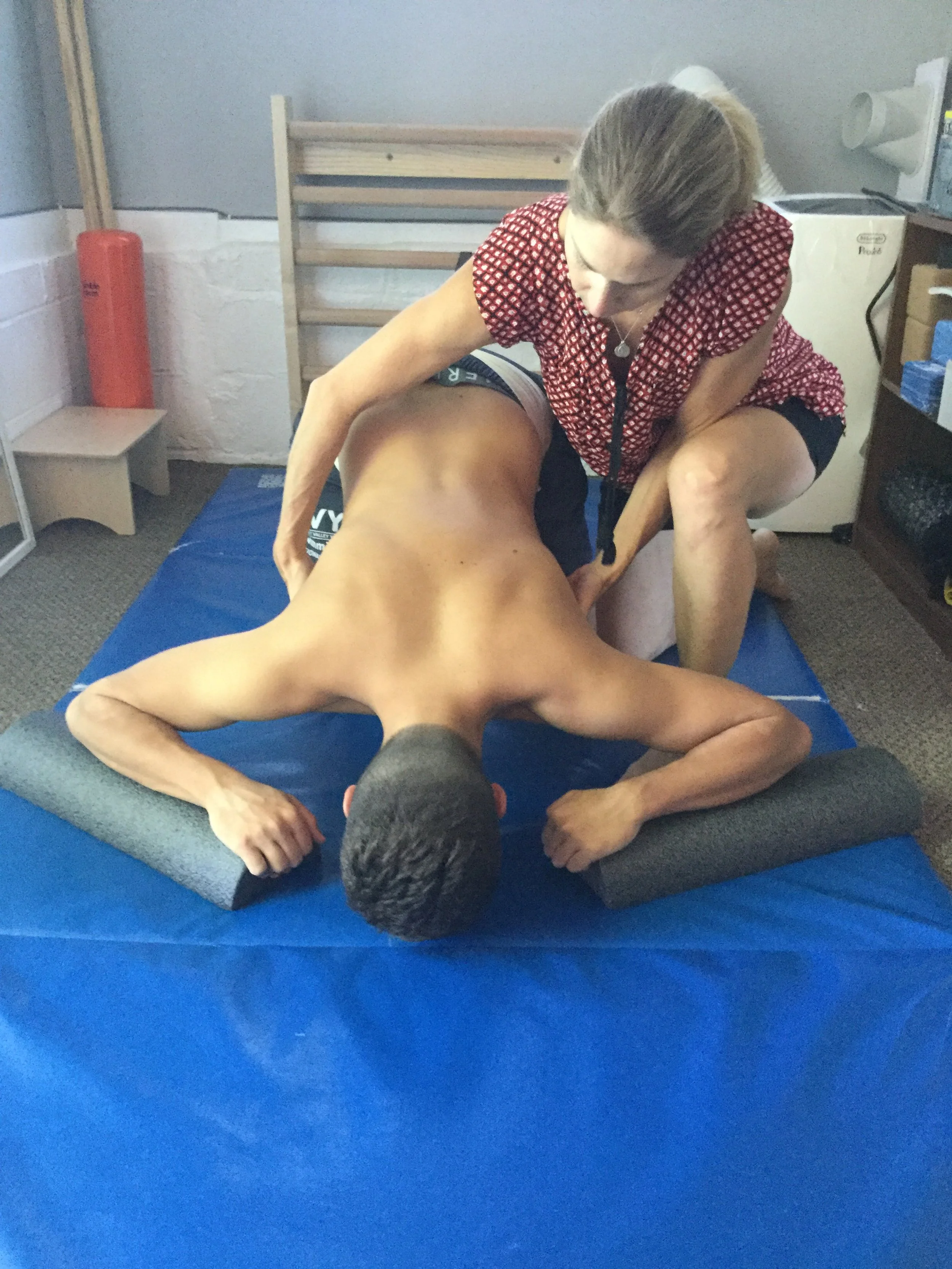Hyperkyphosis and Scheuermann’s Disease
Hyperkyphosis and Scheuermann’s Disease
Understanding Kyphosis
Kyphosis refers to the natural forward curve of the thoracic spine, forming a "C" shape. While a curve with a Cobb angle between 20 and 40 degrees is normal, curves exceeding 45 degrees are considered hyperkyphotic, which can impact posture, mobility, and overall health.
Causes of Hyperkyphosis
Hyperkyphosis can occur at any age and is often associated with structural changes in the spine. Contributing factors include:
Fractures: Compression fractures, often due to weakened bones, can alter spinal alignment.
Osteoporosis: Bone weakening, especially in postmenopausal women, increases fracture risk and spinal curvature.
Disk Degeneration: Age-related flattening of spinal disks can exacerbate kyphosis.
Scheuermann’s Disease: A developmental condition in adolescence where vertebrae become wedge-shaped.
Congenital Abnormalities: Improper spinal development before birth can lead to kyphosis.
Types of Kyphosis
Postural Kyphosis: Common in teenagers, often due to slouching, without structural bone changes. More frequently in girls and typically painless.
Scheuermann’s Kyphosis: A structural spinal abnormality, with wedging of the vertebrae, causing progressive curvature, often noticed during puberty.
Adult-Onset Kyphosis: Often linked to osteoporosis, compression fractures, spinal trauma, or past surgeries, with symptoms ranging from mild back changes to severe deformity and chronic pain.
How Schroth Physical Therapy Can Help
Schroth Method physical therapy offers a non-surgical, exercise-based approach to managing hyperkyphosis. This specialized therapy focuses on:
Postural Realignment: Targeted exercises help lengthen and realign the spine, reducing excessive curvature.
Muscle Balance: Strengthening weak muscles and lengthening tight muscles to restore equilibrium.
Breathing Techniques: Improving chest expansion and lung function through specific breathing exercises.
Body Mechanics Training: Educating patients on proper movement patterns to prevent curve progression and manage pain.
For patients with Scheuermann’s disease or hyperkyphosis, Schroth therapy provides a structured, personalized plan to enhance posture, alleviate discomfort, and promote long-term spinal health.
By addressing the root causes of hyperkyphosis and empowering patients with tools to manage their condition, Schroth physical therapy can be a transformative part of their care journey.

